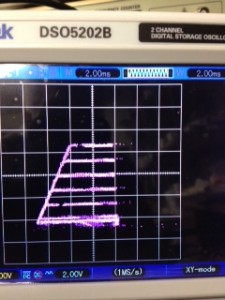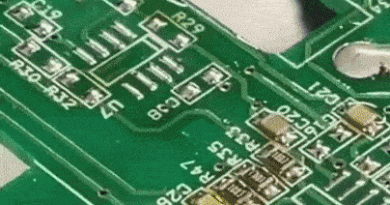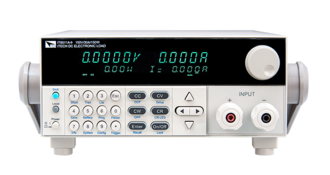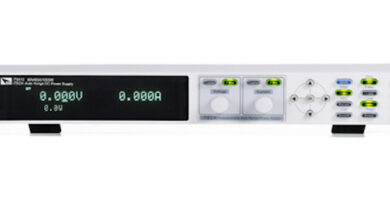Using an Arbitrary Waveform Generator & Digital Storage Oscilloscope to Create a Transistor Curve Tracer
You can use an arbitrary waveform generator and a digital storage oscilloscope (DSO) to create a transistor curve tracer that you can then use to test and characterize semiconductor devices. I will describe a method to produce current vs. voltage (I-V) curves of any semiconductor device using a Siglent SDG 1000 series waveform generator and a Hantek DSO 5000 series oscilloscope.
Set the waveform generator to generate a staircase waveform at a frequency of 120 Hz. This frequency coincides with the frequency produced by a full wave–rectified AC line voltage. The full wave–rectified signal provides the collector (drain) to emitter (source) power, which is displayed on the horizontal axis. The staircase waveform provides the base (gate) driving signal for the device under test.
The collector (drain) current is displayed on the vertical axis of the oscilloscope by developing a voltage across a current-sensing resistance. You will use the oscilloscope in X-Y mode rather than the traditional voltage-time (Y-T) display mode. You must also change the persistence of the display to provide an easier-to-view and more meaningful display.
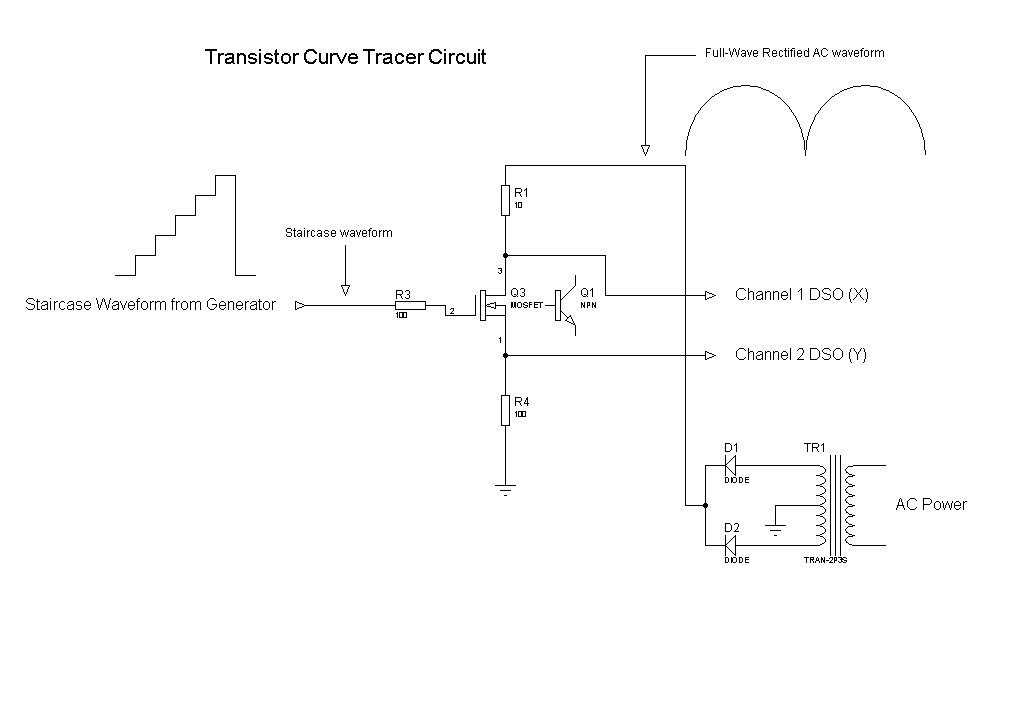 The schematic of the test setup and an example of the resulting display are shown below for an NPN or N-channel device. Simply invert the polarities for a PNP or P-channel device.
The schematic of the test setup and an example of the resulting display are shown below for an NPN or N-channel device. Simply invert the polarities for a PNP or P-channel device.
This example demonstrates a method for generating and displaying the current vs. voltage (I-V) curves of a transistor (either BJT or FET). This task was performed using the Siglent SDG1025 25MHz arbitrary waveform generator and a Hantek DSO5202B 200MHz digital storage oscilloscope as well as a handful of readily available components.
